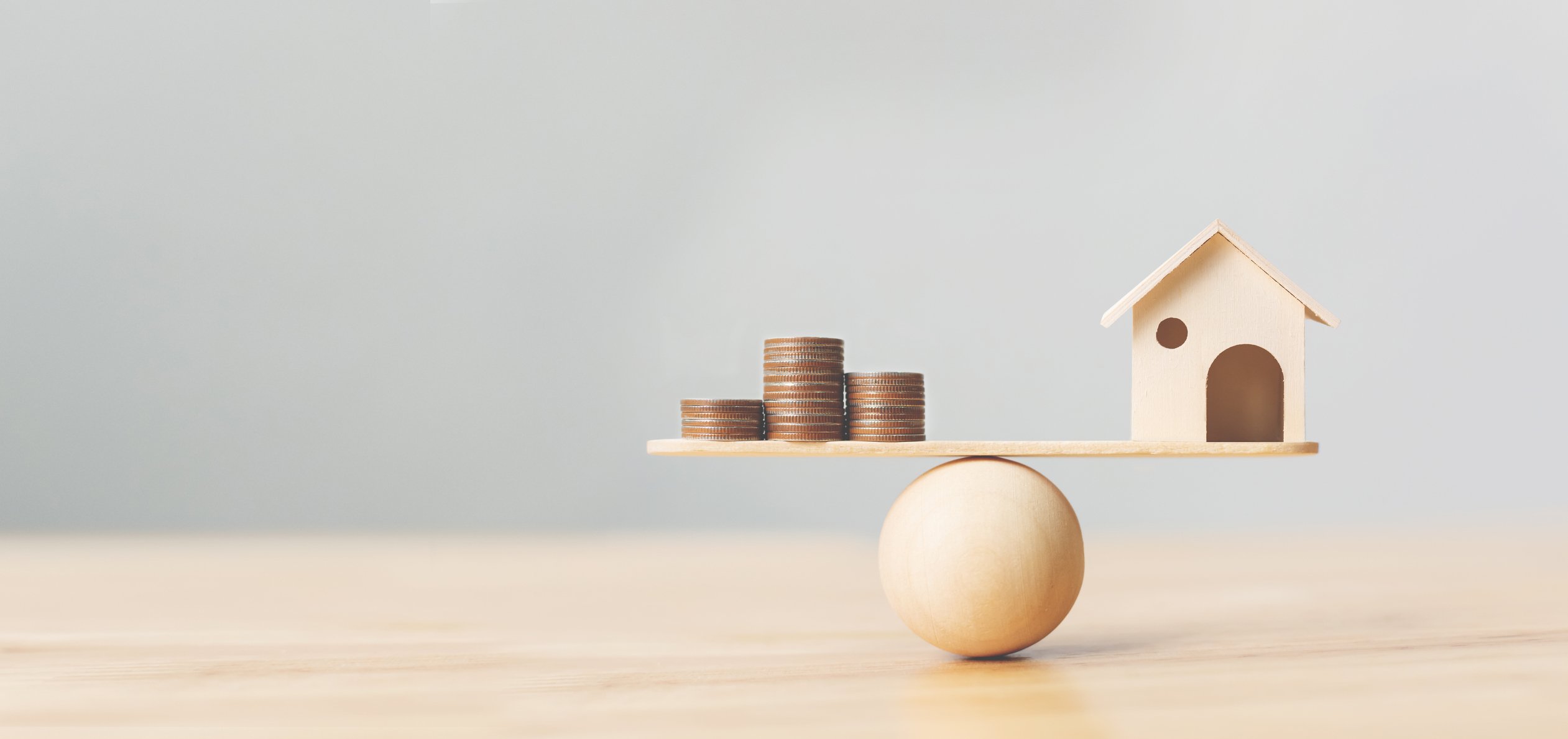Some investors praise the power of leverage and would just as soon walk away from an amazing deal than pay for it in cash. Other buyers argue that paying in all cash has big benefits over borrowing.
While there’s no right or wrong answer to the cash vs. leverage debate, according to Goldman Sachs nearly 60% of the deals in the market today are paid for entirely with cash.
Here’s why so many real estate investors are using their own money to buy rental property instead of going to the bank for a loan.
How a Cash Offer Works in Real Estate
There are several ways to purchase real estate. You can use leverage and borrow money from the bank, or structure a seller carryback if the property is owned free and clear. Alternatively, you can pay all cash.
With the first two options you have to pay interest to the bank or the seller. Even though interest payments are tax deductible, they reduce your cash flow and the amount of money you could put to better use.
You’re also in debt to someone else, at least until the mortgage is paid off. Buyers who borrow with a high LTV (loan to value) run the very real risk of having to give the property back to the lender if the real estate market cycles downward and their tiny slice of equity disappears.
Cash, on the other hand, is king.
Paying all cash lets you buy a property outright without having to jump through hoops and prove to a lender what you already know the property is really worth. You simply put the deal together, conduct your due diligence, close escrow, and pick up the keys.
Of course, making a cash offer means you need to have access to enough capital to close the transaction by using personal funds or putting together a joint venture to raise the money.
Today, there are plenty of investors who are doing exactly that.
According to a recent post on SmartAsset, all-cash transactions for houses have been surging over the last few years. In fact, RealtyTrac estimates that cash buyers account for between 40% of the market today, while data from Goldman Sachs puts the percentage of cash buyers at closer to 57%.

Benefits of Paying All Cash for a Rental Property
There are numerous reasons for paying all cash, and valid points for financing and using OPM (other people’s money). Let’s begin by looking at some of the biggest benefits of paying all cash for a real estate investment:
- Fewer and lower closing costs because you’re not paying countless fees to a lender
- Cash flow is maximized when there are no mortgage or interest payments
- Close the transaction quickly, usually in just a few weeks compared to 30 to 60 days if you’re waiting for a loan to be approved
- Property is owned free and clear with 100% instant equity
- Zero interest payments that line the pocket of the lender and eat away at your cash flow
- No worries about having a low credit score, or sharing information about your personal and business assets and liabilities with a third party
- Sellers love cash offers since they know you’re a serious buyer without a financing contingency
- Opportunity to make a better deal with a seller since you’re paying with cash and can close fast
- Operating expenses are significantly reduced when there’s no mortgage payment
- Risk of foreclosure is non-existent when you own the property outright
- More time to look for qualified renters without having to worry about how the vacancy rate affects your rental income and mortgage payment
Potential Drawbacks to Buying with Cash
To be fair, there are a few potential drawbacks to buying a property with all cash:
- No tax-deductible interest expense may make it harder to shift to a lower personal income tax bracket
- Less asset diversification by tying all of your money up in one property instead of using conservative leverage to buy multiple investments
- Not using leverage makes it harder to get started in real estate investing when you’re trying to save enough money to pay all cash
Last but certainly not least, your cash-on-cash return is actually much lower when you pay for a property all in cash.
Let’s compare buying an $80,000 house with an NOI (net operating income) of $8,000 vs. getting a loan with $20,000 down and an NOI (after the mortgage payment) of $3,000:
- Cash-on-Cash = NOI / Down payment
- $8,000 NOI / $80,000 buying in all cash = 10% Cash-on-cash return
- $3,000 NOI / $20,000 down payment = 15% Cash-on-cash return
In other words, buying with all cash generates a lower return than when leverage is used. However, having a low cash-on-cash return isn’t necessarily bad.
For example, if a property has more short-term risk due to needed repairs or a tenant lease nearing expiration, paying cash in exchange for a lower purchase price can help off-set the potential risk.
Once the property is updated and the tenant stabilized, you may be able to increase the rent to earn a higher NOI, which in turn increases the cash-on-cash return.

How to Build a Property Portfolio by Paying with Cash
Using leverage to buy multiple properties, instead of paying all cash for a single property, isn’t the only way to grow a rental property portfolio.
Without the burden of debt service, paying with cash gives you more free cash flow. When properly managed, all of that extra cash can help you reach your long-term investment goals almost as fast and with much less risk.
There are three steps to follow to grow a property portfolio by paying cash for every rental property:
Step #1: Accumulate enough capital to buy a house for cash
Even after 10 years of home prices always rising, it’s still possible to find good turnkey single-family rental houses priced at $100,000 or less.
Step #2: Funnel your net cash flow into a special account
Put 100% of your net rental income plus any extra savings from your daytime job into a special reserve account that’s earmarked for your next property purchase.
Step #3: Purchase your next property with all cash
Use the money in your acquisition account to pay for your second property in cash. Take the opportunity to fine-tune your investment process, and begin the savings and purchase cycle a third time around. Or, as experienced real estate investors like to say, “Lather, rinse, and repeat.”
An Example of Buying with Cash
Here’s an example of how buying a lower-priced single-family rental house with cash can work in real life.
- Purchase price = $80,000
- Net cash flow (after operating expenses) = $8,000
- Extra annual contribution by investor = $5,000 (about $417 per month)
- Total cash in acquisition account, each year = $13,000
In just over six years, you’ll have enough money in your acquisition account to purchase another rental property priced at $80,000. In fact, you’ll be able to buy another house several months sooner by paying with cash than if you purchased the first property with a mortgage.
Now, paying $80,000 for a single-family turnkey rental house may seem too good to be true, especially with the way home prices have increased over the last ten years.
However, if you go to the Roofstock Marketplace and search for houses with a list price of $80K or less, you’ll see that there are plenty of attractive lower-priced rental houses with high cap rates to choose from.

Reducing the Risk of Buying Rental Property with Cash
There are three potential risks some investors face when paying for a property all in cash.
Risk #1: Believing that paying in cash justifies making a poor investment
Solution: Analyze each property pretending that you don’t have the cash on hand. Create a proforma assuming you’re going to use a lot of leverage – even up to 100% financing -- to see if the deal still cash flows. If it doesn’t, keep looking for a better rental property in which to invest your capital.
Risk #2: Owning property with 100% equity under your own name
Solution: Talk to your real estate attorney or financial advisor about ways to keep your personal name out of the public records. Using an LLC or trust can help disguise the fact that you own income-producing real estate free and clear.
Risk #3: Never using leverage
Solution: One of the nice things about buying a rental property with cash is that you have the option of financing at a later day. Just because you have a system of paying in cash, that doesn’t mean you can never use financing. There are plenty of options for financing available. An LTV of 50% or 60% still leaves you with a healthy amount of equity in the property.
Final Thoughts
Buying a rental property with cash gives you several advantages that a borrower will never have.
Offering cash to a seller who doesn’t have to worry about a financing contingency is a great way to drive down the purchase price of the property. Without having to deal with financing, closing occurs much quicker and your free cash flow is much larger when you don’t have to pay a mortgage or interest.
In fact, when you buy the right rental property at the right price, the amount of net income generated can fund the cash purchase of another rental property faster than if you financed.









